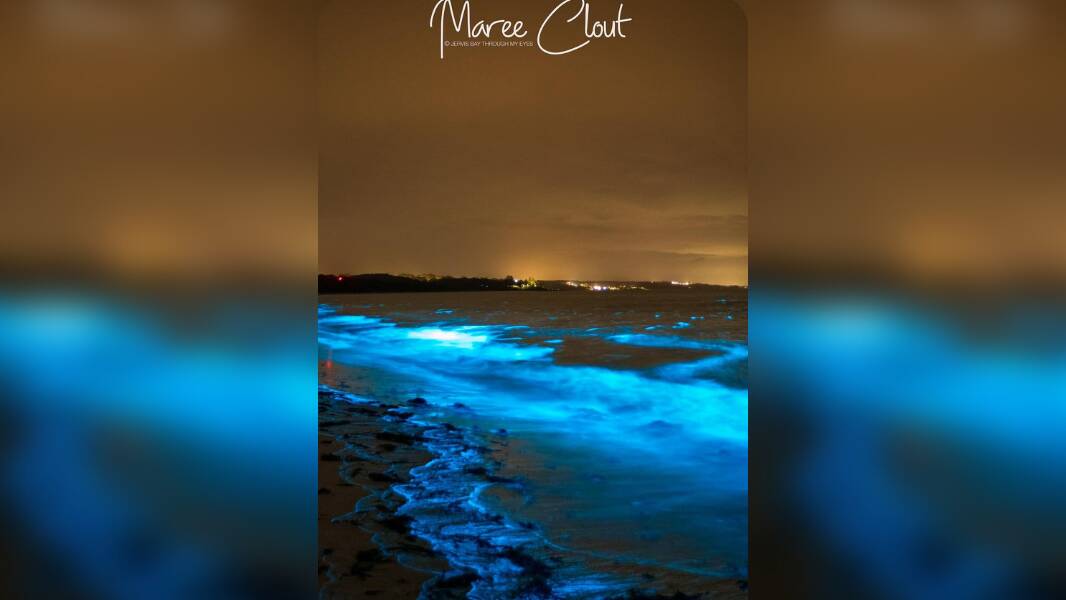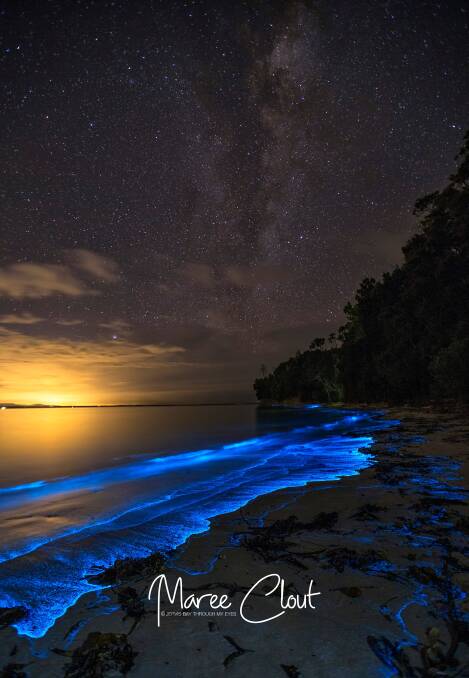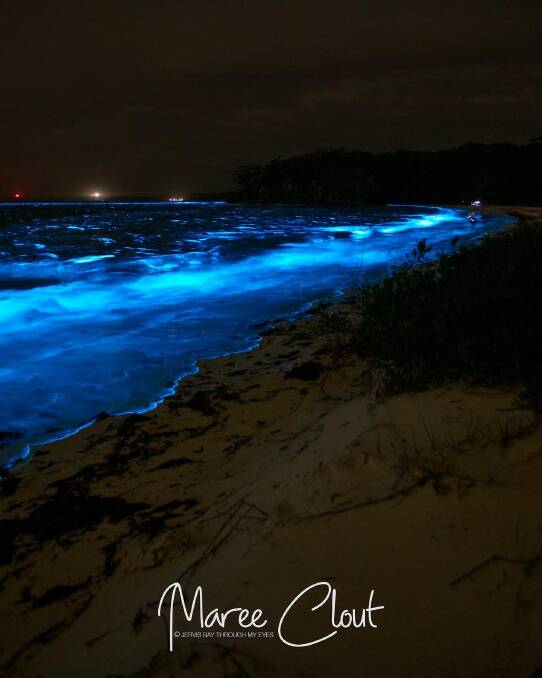
A night of algal bioluminescence on the NSW South Coast is 'like Christmas' for keen nature photographers.
Subscribe now for unlimited access.
$0/
(min cost $0)
or signup to continue reading
And over the weekend, it finally arrived.
Photographers and holidaymakers alike have delighted in the spectacle of 'sea sparkles' at beaches around the Jervis Bay, from Collingwood Beach through to Green Patch.
The spectacle presented itself late last week on Thursday and Friday night (September 22-23) and was reported at multiple locations.

Like many local bioluminescence enthusiasts, Vincentia nature photographer Maree Clout spent her afternoons and evenings patrolling local beaches for potential signs of the phenomenon.
Generally, those signs can be a slight rise in water temperature; north-easterly winds; and red, orange, or even pink-ish algae on the shoreline.
Though Ms Clout said even all those indicators may only equal a 'maybe' for bioluminescence sightings.
"I'm always on the lookout for the right conditions, and because I've been photographing it for about eight years, I sort of clue in what to look for." Ms Clout said.
"Probably 95 per cent of the time when you look for it, it's not there.
"So it can be really frustrating... but it's like Christmas - it's really exciting when it all comes together."
IN OTHER NEWS:
Ms Clout captured the spectable at Collingwood Beach on Thursday night.
She ventured into Booderee National Park on Friday night and found more bioluminescence at Iluka Beach.

This year, the bioluminescence has been ultra rare; anecdotally, there was only one other sighting back in August.
"We went for a whole year without seeing it," Ms Clout said.
"Other years we've had it maybe 10 or 15 times a year - it's so random, and very cool to see when you do."
Ocean bioluminescence is genrally caused by an algae bloom of plankton, distrubed by a breaking wave or a splash in the water.
Calm and warm sea conditions are usually a catalyst for the algae bloom, however, the phenomenon is notoriously difficult to predict.


